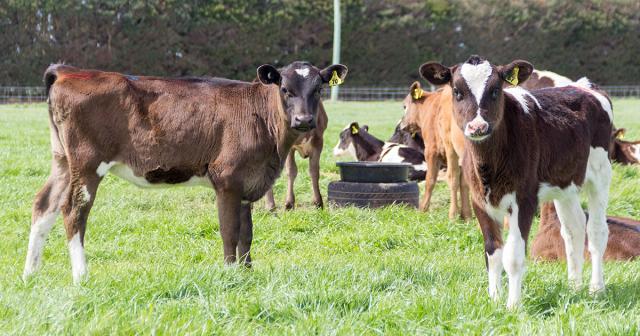Calves have been hot property this spring, but Wormwise’s Programme Support, Mary Bowron, warns that without the right management, bought-in calves are potentially carrying a hidden time-bomb.

When buying calves, it’s easy to overlook the hidden threat of drench resistance. Just because you can’t see it, doesn’t mean it’s not there. These new animals could be carrying a hidden time bomb. Bought-in calves can represent a major risk of importing drench-resistant cattle worms.
Why is this? Calves from intensive rearing properties may have already been drenched more than once. If the product used was not fully effective, they could be carrying an unseen burden of resistant worms. As these calves haven’t yet developed effective immunity to fight off parasites, they are little worm factories, churning out lots of eggs that develop into infective larvae on your pastures.
When purchasing calves, ask the vendor for recent drench testing data to see if the common drench classes are effective. If not available or drench resistance is present, then a quarantine drench is necessary.
Having an effective quarantine drench protocol minimises the risk of bringing drench resistant worms onto your farm. This must include:
- An effective drench.
- Consideration of where to stand the animals off after drenching.
Drenching
The efficacy of a drench is determined not only by the active ingredients, but also the volume given and technique used. Calibrate the drench gun, weigh some calves and drench to the heaviest ensuring the whole dose is given to each animal. If there is substantial variation in weight, draft into heavy and light lines to avoid overdosing the little ones or set up a separate pack and gun for drenching these as they come through.
Combination drench resistance is increasing sharply in cattle worms in New Zealand – therefore the most appropriate quarantine option is to use a novel drench. Of the two ‘novel’ drenches available in New Zealand, only Zolvix® is registered for cattle.
Zolvix® along with many other common cattle drenches contains abamectin. This can be toxic in small calves. Abamectin products are not recommended for calves less than 100 kg. If you can avoid purchasing these little calves - even better. Underweight calves take longer to grow to a size where they have good worm immunity and in the meantime, cause more worm contamination on your farm.
Stand-down time
An effective quarantine drench only kills adult worms and larvae; it doesn’t kill the eggs already laid by female worms. These eggs will continue to pass out of the calves after the worms have been killed, for 24-48 hours.
To avoid imported eggs hatching on your pastures, it is important to have the new arrivals held in a bare yard or on grating, with feed and water for 24-48 hours. Larvae that emerge from eggs on these areas mostly die as there is no moisture or grass to live on.
Another option is for new calves to be held in a specific quarantine paddock for 24-48 hours, but you can’t graze this area with R1 cattle for several months afterwards. You could follow behind with well-fed adult cows or sheep or to mop up larvae. By and large sheep and cattle don’t share parasites, so sheep grazing is a great way to mop up calf worms. Targeting these quarantine paddocks for immediate spray-out and cropping is another alternative.
A single quarantine paddock is easy to manage if calves are arriving over a short timeframe. If calves are arriving over a longer period of time, there is a risk of creating a resistant worm hotspot which could lead to super-resistant worms.
Don’t put your quarantine drenched calves straight onto new grass or other areas likely to have a low parasite challenge. Have them graze contaminated parts of the farm for a few days. This way, any remaining eggs that are passed out will be diluted by the mixed worm populations already present.
Check out the quarantine page on Beef + Lamb New Zealand’s Wormwise website for more information.